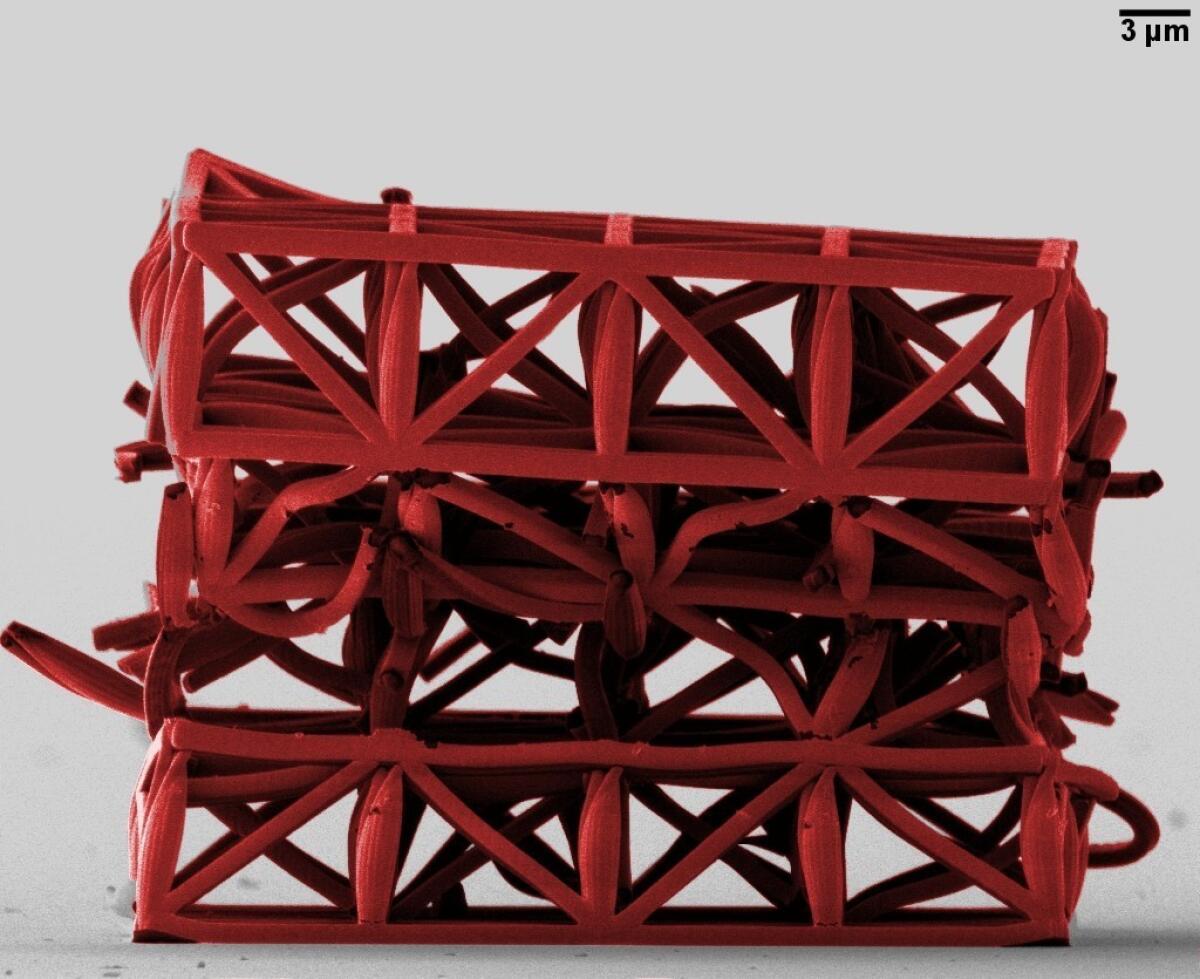Could future spaceships be built with artificial ‘bone’?

- Share via
How do you make a light, low-density material without compromising its strength? It’s a conundrum that has plagued engineers and builders looking for tough, durable materials that don’t weigh them down.
Now, using a high-tech 3D printer, scientists in Germany have created a lightweight but very strong material inspired by the intricate microscopic architecture of living tissue – our own bones.
The research, published in the Proceedings of the National Academy of Sciences, could pave the way for future super-light materials that could be used in microfluidics devices or to make lighter (and thus cheaper) spacecraft.
“It’s a long-standing aim in engineering to create new materials which are even lighter and stronger, [but] there’s some kind of limit reached with standard materials,” said lead author Jens Bauer, a mechanical engineer at the Karlsruhe Institute of Technology. “Now we have to figure out how we can go further — and one idea is to do it like nature does.”
Industrial materials like steel are often solid and thus very dense and heavy – which is a drawback if you’re trying to make something strong but light (like a plane). Even though experts have managed to make artificial ‘cellular’ materials like aluminum foam, which is full of air pockets and thus much lighter than a solid hunk of metal, there’s a trade-off – the porous metal is much weaker than solid metal would be. It’s not easy to engineer strong materials less dense than water (which is about 1,000 kilograms per cubic meter).
Wood and bone don’t seem to have this problem. These living tissues, natural cellular materials, are porous but still very strong – and it’s because of how the air pockets are arranged. In metal foam, the air bubbles are random, and so is the structure. But in wood and bone, there’s a complex architectural pattern to the bits of bone crisscrossing through all those air pockets that are designed to bear loads.
(It’s a little bit like a table’s legs: Even though the area under the tabletop is mostly air, those skinny sticks can hold up the tabletop and because they’re placed in a way to take the load.)
Wood and bone have another advantage. Their cellular architecture starts on very tiny, microscopic scales, which allows them to take advantage of the size effect—the smaller your building material, the stronger it gets.
Is this phenomenon related to how tiny ants can carry loads at 50 times their body weight, but humans can’t? Nice try, Bauer said.
“It’s not really the same size effect, but it’s similar,” Bauer said.
So the researchers used a 3D laser lithography machine – basically a very fancy 3D printer – to build very tiny microstructures out of a ceramic-polymer composite. They made several different designs, from cubic grids with diagonal supports to hexagonal honeycomb-like structures.
These light building materials were remarkably tough – they exceeded the strength to weight ratio of all engineering materials with a density less than that of water, the researchers said.
There’s no good way to mass-produce such materials, Bauer said – the technology is very young. But it does raise the hope that such bioinspired materials could one day make building safe but lightweight structures much easier.
ALSO:
The secret to dolphin speed? It’s not skin-deep
Why do birds fly in a V? Endangered bird reveals amazing secret
Scientists wrestle alligators, strap cameras to their backs




